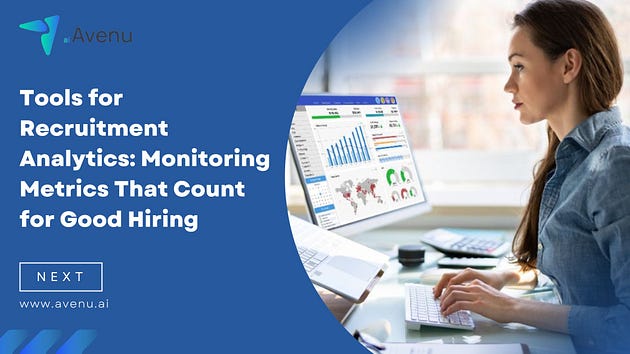Tools for Recruitment Analytics: Monitoring Metrics That Count for Good Hiring

Companies in the cutthroat employment market of today must use better, data-driven recruiting practices. By enabling companies to monitor important parameters influencing decision-making, recruitment analytics solutions significantly assist in maximizing the recruiting process. Measuring important performance indicators (KPIs) helps companies to target their objectives better, increase effectiveness, and identify top talent. Whether you use an automated recruiting System or Interview Scheduling Artificial Intelligence, the correct metrics guarantee that your choices on recruiting are informed.
This article looks at the key indicators for monitoring to support recruiting success and the fundamental tools for recruitment analytics.
1. How Modern Hiring Uses Recruitment Analytics
Before delving into particular numbers, one must first grasp why recruiting analytics is a game-changer. Whereas recruitment analytics uses real-time data to evaluate recruiting efficacy, the conventional hiring method was based on intuition and limited data. From how applicants interact with your job openings to where elite talent is found, it offers insights into recruiting.
Companies may find candidates, evaluate applicant quality, and streamline the recruiting process using the Tools for Recruitment Analytics, thereby enabling manual monitoring or AI-powered solutions, recruitment analytics has grown to be very essential for HR departments and recruiting managers.

2. Important Indices for Monitoring Good Hiring
Using recruiting analytics tools calls for monitoring various significant parameters. These indicators provide insightful information to assess your recruiting initiatives’ success:
a. Time to Replace
From the moment the job is listed until an offer is accepted, this statistic gauges the time it takes to fill a void. Monitoring time-to-fill enables HR departments to spot any recruiting process hold-back. Using Automate Hiring Systems and Interview Scheduling Artificial Intelligence helps companies cut this time and increase effectiveness.
b. Standards of Hire
The quality of hiring, which gauges the performance and retention rate of new workers, is among the most important measures in recruiting analytics. Monitoring this statistic enables businesses to see if candidates they are attracting satisfy performance criteria and fit corporate culture. Using prior data, analytics tools may project candidate success and modify sourcing plans.
c. Location of Hire
This statistic indicates which job boards, references, and social media sources provide the best prospects. Knowing where great talent originates helps businesses concentrate their efforts on the most efficient sourcing strategies. Insights on Recruiting, for instance, might show that social media efforts get more quality applicants than conventional job boards.
d. Potential Experience
A perfect applicant experience may either make or ruin a hire. Tools for recruitment analytics allow one to track elements such as response times, interview comments, and general satisfaction. Using Interview Scheduling Artificial Intelligence will enable companies to provide candidates with quicker, more responsive communication, therefore enhancing their path from application to onboarding.
e. Cost per Hire
Including job ads, recruiting agency fees, and internal HR expenses, this statistic gauges the whole cost of employing a new employee. Tools for Recruitment Analytics let businesses monitor spending and identify areas for cutback. Using automation technology helps companies have a good recruiting process while cutting administrative expenses.

3. How may one use recruitment analytics tools?
Just one component of the equation is knowing which metrics to monitor. The other is understanding how to properly use tools for recruitment analytics. Here’s how businesses may maximize recruiting data:
a. Create automated data collecting systems
Manually monitoring recruiting statistics might take time. By using an automated hiring system, one guarantees accurate and automatic data collecting. Real-time data on important benchmarks such as time to fill, cost per hire, and applicant experience comes from automation technologies.
b. apply predictive analytics
In recruiting, predictive analytics helps businesses project applicant success and future hiring requirements. These instruments examine past performance and provide forecasts for which applicants are most likely to be successful and remain with the firm.
c. Using artificial intelligence, schedule interviews
Interview Planning Another instrument able to increase productivity by automating the scheduling process is artificial intelligence. By coordinating interview schedules with applicants and interviewers without back-and-forth contact, artificial intelligence systems help to shorten the time needed to complete interviews and raise candidate satisfaction.

4. Why Monitoring Recruitment Data Matters
Refining recruiting plans and enhancing general performance depends on tracking recruitment indicators. Businesses that track their hiring practices may find inefficiencies, raise the calibre of new employees, and save expenses. Using the correct tools and data can help to improve decision-making whether it comes to AI-powered scheduling or automated hiring systems simplifying processes.
Along with helping to identify and attract top people, metrics support work happiness and long-term retention. Organizations may create a better workforce by constantly observing the performance of new employees and modifying their plans depending on the facts.
Conclusion
Companies trying to improve their recruiting process now rely heavily on recruitment data. Using the correct data may change how companies recruit from monitoring time to fill to applicant quality. You should start using a data-driven recruiting strategy if you want to keep ahead in the fast-paced recruitment scene of today.
Modern tools for recruitment analytics available at aiAvenu enable simple tracking of the relevant indicators. Our AI-powered solutions include Insights on Recruiting, Automate Hiring System, and Interview Scheduling Artificial Intelligence that provide outcomes, therefore simplifying your whole hiring process. All set to use innovative analytics to change your recruiting procedure? Get in touch with aiAvenu now to find out how we could assist with quicker and smarter hiring.

Comments
Post a Comment